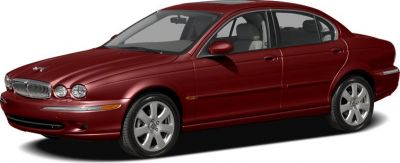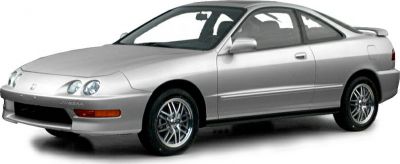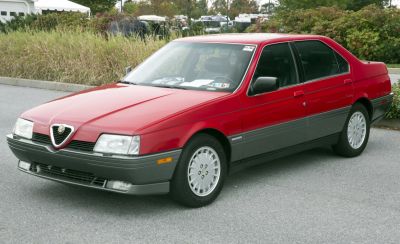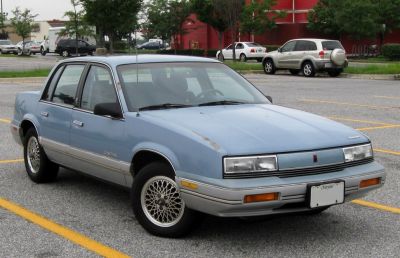 1995 Peugeot 406 (Phase I, 1995) Dimensions, Size & Specs
1995 Peugeot 406 (Phase I, 1995) Dimensions, Size & SpecsMeasurements of the 1995 Peugeot 406, engineered for optimal performance and comfort
| Dimensions | |
|---|---|
| Length: | 4600 mm181.1 in15.1 ft |
| Width: | 1765 mm69.5 in5.8 ft |
| Height: | 1396 mm55.0 in4.6 ft |
| Trunk Capacity: | 430 liter15.2 cu ft |
| Weight Specifications | |
| Curb Weight: | 1250-1415 kg2756-3120 lbs |
| Maximal permitted Weight: | 1790-2015 kg3946-4442 lbs |
| Tire Specifications | |
| Rims Size: |
|
| Tire Sizes: |
|
The Peugeot 406 Phase I, produced between 1995 and 1999, is a mid-size sedan that brought modern styling and engineering to the Peugeot lineup during the mid-1990s. Measuring 4600 mm (181.1 inches) in length and 1765 mm (69.5 inches) in width, it presents a balanced size that caters well to both urban and highway driving needs. The vehicle's height is 1396 mm (55.0 inches), providing a sleek and aerodynamic profile that enhances its road presence while aiding fuel efficiency.
The curb weight of the Peugeot 406 Phase I ranges from 1250 to 1415 kg (2,755 to 3,122 lbs), making it relatively lightweight for its category, which contributes positively to handling and performance. Its maximum weight capacity spans from 1790 to 2015 kg (3,947 to 4,442 lbs), ensuring it can safely carry passengers and cargo with ease.
Inside, the sedan offers a practical luggage capacity of 430 liters (15.2 cubic feet), ample for everyday use and moderate travel needs. The Peugeot 406 rides on 15-inch rims, with tires sized 185/70 R14, 195/65 R15, and 205/60 R15 available, offering a good balance between comfort and sporty handling characteristics.
Overall, the Peugeot 406 Phase I stands out as a well-rounded, mid-size sedan from the late 1990s, combining efficient size dimensions with practical interior space. Its thoughtful engineering and distinctive French design make it a notable model for buyers interested in classic European sedans with moderate dimensions suitable for a wide range of driving scenarios.
Discover the standout features that make the 1995 Peugeot 406 a leader in its class
Have a question? Please check our knowledgebase first.
The Peugeot 406 (Phase I, 1995) sedan measures 4600 mm (181.1 inches) in length, 1765 mm (69.5 inches) in width, and 1396 mm (54.9 inches) in height. These dimensions place it comfortably in the mid-size sedan category, offering a balanced presence on the road with ample interior space for passengers.
The curb weight of the Peugeot 406 (Phase I) ranges between 1250 kg (2,755 lbs) and 1415 kg (3,121 lbs), depending on the equipment and trim level. The maximum permissible weight is between 1790 kg (3,947 lbs) and 2015 kg (4,441 lbs), allowing for a good load and passenger-carrying capacity without compromising performance or safety.
The luggage capacity of the Peugeot 406 (Phase I) stands at 430 liters (approximately 15.2 cubic feet). This volume offers ample space for everyday needs, including grocery runs, luggage for trips, and other cargo, making it a practical choice for families or individuals requiring reasonable storage without sacrificing passenger room.
The Peugeot 406 (Phase I) typically comes with 15-inch rims. The compatible tire sizes include 185/70 R14, 195/65 R15, and 205/60 R15. These options provide a good balance of ride comfort and handling performance tailored to this model’s suspension setup and driving dynamics.
Yes, the Peugeot 406 (Phase I) fits comfortably into a standard garage. With a length of 4600 mm (181.1 inches) and a width of 1765 mm (69.5 inches), it is within the typical size limits for residential garages, which usually accommodate vehicles up to about 2.5 meters (98 inches) in width and 5.0 meters (197 inches) in length, allowing for easy parking without tight fits.
The Peugeot 406 (Phase I) succeeded the 405 and brought an increase in overall dimensions. The 406 is longer, wider, and slightly lower than the 405, contributing to a more modern aesthetic and improved interior space. Its length of 4600 mm exceeds that of the 405 by about 120-150 mm, and the width is broader by roughly 50 mm, resulting in enhanced comfort and driving stability.
Compared to contemporaries like the Ford Mondeo, Opel Vectra, or Volkswagen Passat from the mid-1990s, the Peugeot 406 (Phase I) is competitively sized. Its length and width align closely with these models, offering similar interior space and comfort. The 406 is slightly wider than some rivals, aiding in stability and cabin spaciousness, while its luggage capacity of 430 liters is also competitive within this class.
The Peugeot 406 Phase I stands at 1396 mm (54.9 inches) tall, contributing to a sleek and aerodynamic profile. A lower height improves handling characteristics by lowering the center of gravity, enhancing stability around corners, and reducing wind resistance, which can positively influence fuel efficiency and driving dynamics compared to taller vehicles.
The maximum weight range of the Peugeot 406 (Phase I) spans from 1790 kg (3,947 lbs) to 2015 kg (4,441 lbs), allowing the car to safely carry passengers and cargo up to this limit without compromising structural integrity or vehicle dynamics. This capacity makes the 406 suitable for a typical family use scenario, balancing comfort and utility.
Discover similar sized cars.

| Production: | 2001-2009 |
|---|---|
| Model Year: | 2001 |
| Length: | 4672 mm183.9 in |
| Width: | 1789 mm70.4 in |
| Height: | 1430 mm56.3 in |

| Production: | 2023-2025 |
|---|---|
| Model Year: | 2024 |
| Length: | 4646 mm182.9 in |
| Width: | 1816 mm71.5 in |
| Height: | 1445 mm56.9 in |

| Production: | 2019-2023 |
|---|---|
| Model Year: | 2020 |
| Length: | 4641 mm182.7 in |
| Width: | 1816 mm71.5 in |
| Height: | 1448 mm57.0 in |

| Production: | 1994-2001 |
|---|---|
| Model Year: | 1994 |
| Length: | 4525 mm178.1 in |
| Width: | 1710 mm67.3 in |
| Height: | 1370 mm53.9 in |

| Production: | 1987-1998 |
|---|---|
| Model Year: | 1987 |
| Length: | 4550-4670 mm179.1-183.9 in |
| Width: | 1760 mm69.3 in |
| Height: | 1356-1400 mm53.4-55.1 in |

| Production: | 1984-1995 |
|---|---|
| Model Year: | 1984 |
| Length: | 4555 mm179.3 in |
| Width: | 1700 mm66.9 in |
| Height: | 1330 mm52.4 in |

| Production: | 2015-2018 |
|---|---|
| Model Year: | 2015 |
| Length: | 4632 mm182.4 in |
| Width: | 1811 mm71.3 in |
| Height: | 1428 mm56.2 in |

| Production: | 2015-2018 |
|---|---|
| Model Year: | 2015 |
| Length: | 4632 mm182.4 in |
| Width: | 1811 mm71.3 in |
| Height: | 1431 mm56.3 in |
